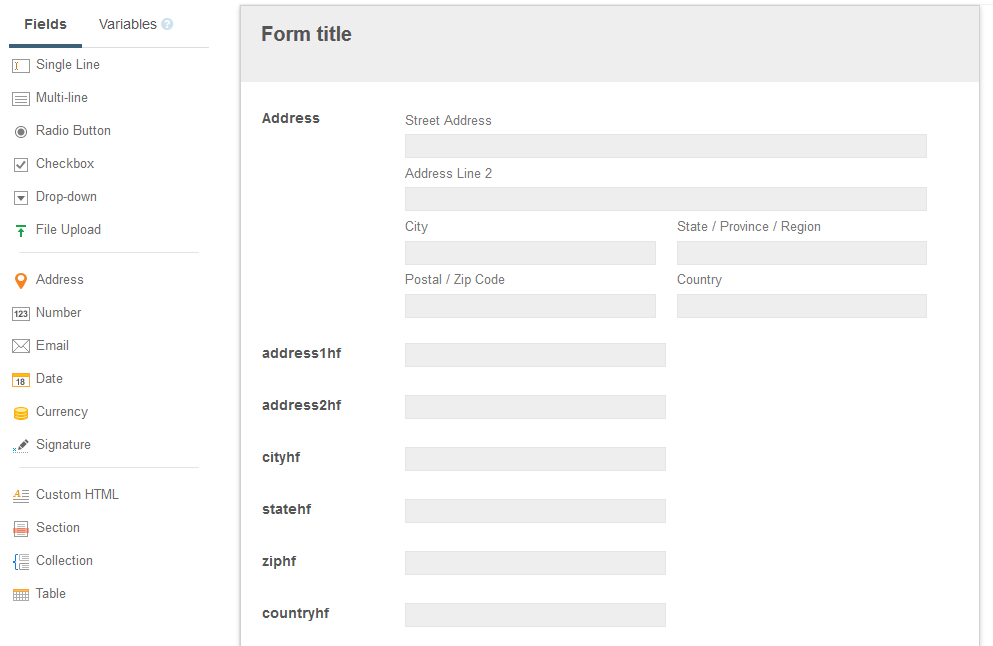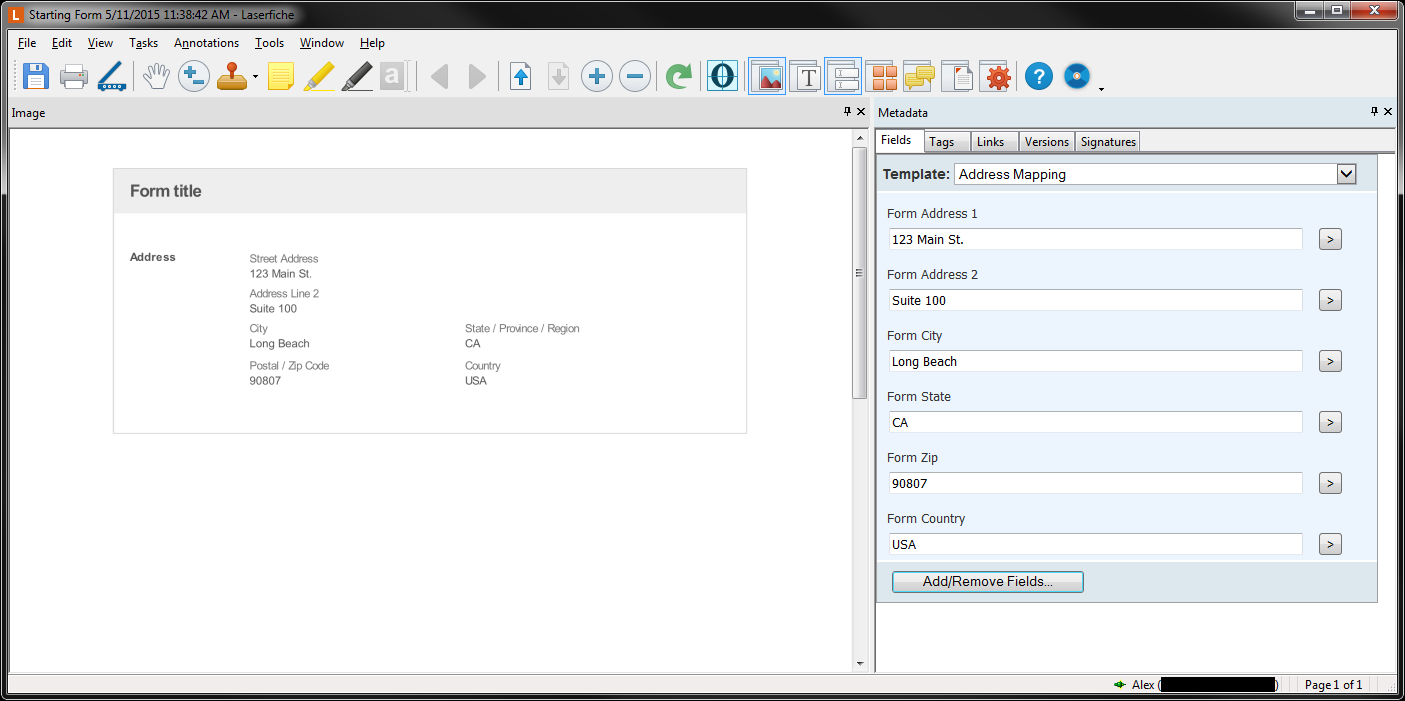Currently there isn't an out of the box way to do that, but you can use Javascript for this.
In your form, add additional individual single line fields for address1, address2, city, etc.

The idea is that whatever the user fills into the standard Address field will get transferred into those corresponding single line fields. We'll also use Javascript to hide these fields so they won't show up on the form.
$(document).ready (function () {
$('.address1hf').hide();
$('.address2hf').hide();
$('.cityhf').hide();
$('.statehf').hide();
$('.ziphf').hide();
$('.countryhf').hide();
$('.Address1').on('change', function() {
$('.address1hf input').val($(this).val());
});
$('.Address2').on('change', function() {
$('.address2hf input').val($(this).val());
});
$('.City').on('change', function() {
$('.cityhf input').val($(this).val());
});
$('.State').on('change', function() {
$('.statehf input').val($(this).val());
});
$('.Postal').on('change', function() {
$('.ziphf input').val($(this).val());
});
$('.Country').on('change', function() {
$('.countryhf input').val($(this).val());
});
});
The individual fields have CSS classes associated with them like address1hf, address2hf, etc. Those fields are hidden as soon as the form loads. Then, the Javascript takes what the user inputs into the standard address field and copies the value into the corresponding hidden fields.
Lastly, in the business process modeler service task, you can just map the variables of those hidden fields to the individual Laserfiche fields.

And here's what the document looks like in the repository
